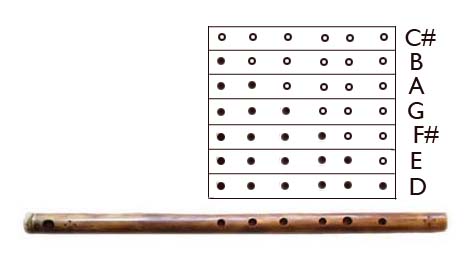First, most songs I find online are written with the classical note symbols on scales, which I don't know how to read, such as this one:

And when I tried to find a guide to help me read those, they were all for the professional, concert-type flute, like this one:
http://trevorjamesflutes.com/PDFs/TJ%20 ... 0chart.jpg (link because it's a big picture)
While my flute is very simple, it only has 6 holes for the fingers and another one for blowing, basically this one:
So basically, I'm asking if there's any chance that I could learn to play songs from scales on my simple-style flute. I only know to play these notes:

So, sorry for the long post, and warm thanks to anyone who can help me!